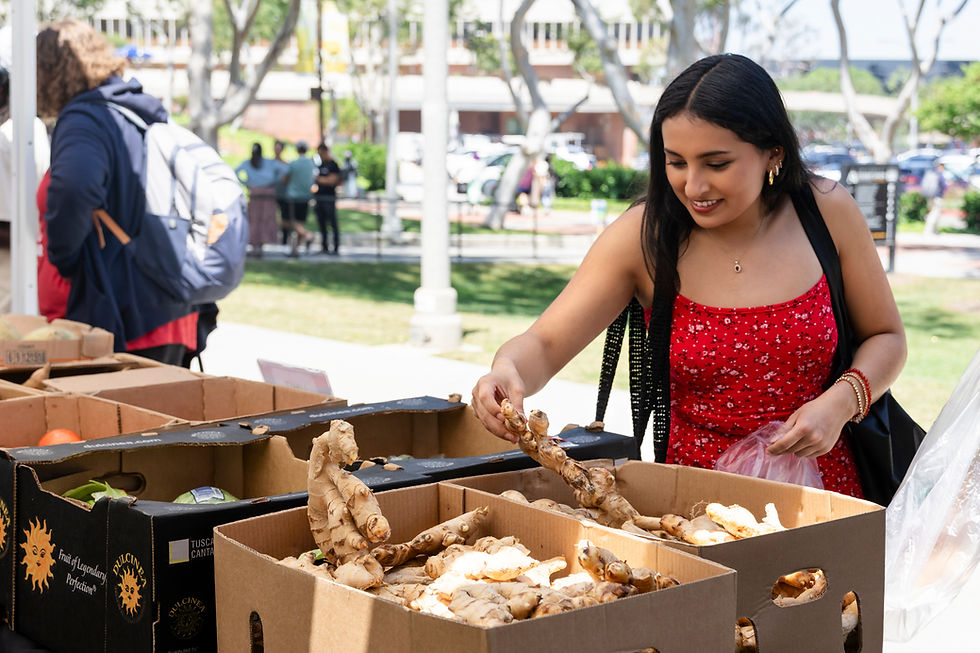Giving Funds Instead of Food: Why Monetary Donations Can Be Most Helpful for Food Pantries
- Karlen Nurijanyan

- Jul 21, 2023
- 4 min read
Updated: Feb 18

Food pantries rely on donations from compassionate individuals and organizations to feed those facing hunger and food insecurity in their communities. Many of us want to help by donating food, but is this always the best way to provide support? While non-perishable food drives help stock pantry shelves, direct financial contributions can often make an even bigger impact.
Why Food Pantries Need Money in Addition to Food Donations
Food pantries depend on food donations from the community to distribute to low-income individuals and families struggling with hunger. Canned goods, boxed meals, peanut butter, grains, and other shelf-stable items are always needed. But food alone isn't enough to operate a successful food assistance program.
There are costs associated with storing, transporting, sorting, and shelving donated food before it can reach those in need. Food pantries also require funding for:
Facilities and warehouse space
Refrigeration and freezers to store perishable donations
Trucks and vans to pick up and deliver food
Paid staff to oversee operations and distributions
Resource guides, brochures, and nutritional handouts for clients
Money allows organizations to purchase exactly the kinds of foods they need most, such as produce, dairy, and protein products. Bulk buying allows them to acquire food at lower costs versus retail pricing. Monetary donations give non-profits flexibility to use funds efficiently across all aspects of their hunger relief efforts.
More Meals Provided Per Dollar with Cash Donations
Studies consistently show that cash donations provide substantially more meals per dollar than physical food donations. This is due to the administrative costs involved with food drives and sorting/storing donated food items.
For example, an analysis by Feeding America found that for every $1 donated, they can provide enough food for 10 meals. But for every pound of food donated, they can only provide 1.1 meals.
Food pantries themselves can also stretch dollars further by procuring exactly the types of healthy, nutrient-dense foods they need most in bulk. They have buying power and partnerships food donors lack.
Eliminating Waste
Donated food often includes items people had left over in their cabinets or impulse purchases that don’t align with what pantries require. Shelves can become overstocked with certain products while lacking others. Out-of-date food donations also must be discarded. With monetary donations, food banks avoid waste by purchasing only what they can distribute quickly and efficiently to their communities.
Advantages of Monetary Donations:
More meals provided per dollar: Food banks can get more bang for their buck through bulk purchases.
Food variety: They can buy the optimal mix of nutritious food.
No waste: No concerns about expired or unneeded food items.
Flexibility: Money can also be used where most useful, like facilities, transportation, refrigeration, etc.
Convenience: Donors don’t have to shop and deliver food themselves.
Efficiency: Far less labor is needed to process cash donations.
How Monetary Donations Directly Help the Community
Your local food pantry or food bank distributes thousands of pounds of food every month to children, seniors, veterans, and families in need across your community.
Every dollar donated helps them continue providing nutritious meals through:
Food procurement and distribution: Buying food in bulk at lower costs to distribute.
Direct food assistance: Funding their food pantries and free produce distributions for those facing food insecurity.
Targeted programs: Like produce distributions for seniors and summer lunch programs for kids without school lunches.
Partnerships: Supporting a network of partner organizations running hunger programs.
Advocacy and education: Raising awareness of hunger solutions through events and nutrition classes.
Infrastructure: Maintaining their facilities for food storage and distribution.
When you donate funds instead of food, you fuel a streamlined operation engineered to turn dollars into meals. Your money pays for food, facilities, equipment, and all resources that bring nourishment to food-insecure neighbors.
How To Donate Money to Your Local Food Pantry
If you want to maximize your impact through financial contributions, here are easy ways to give:
Online donation: Donate directly through their website.
By phone: Call to donate over the phone.
By mail: Mail check payable to the food pantry.
Monthly giving: Sign up for automatic monthly deductions.
Fundraiser: Set up an online fundraiser on social media.
Legacy giving: Include the food pantry in your planned giving.
Workplace campaign: Enroll with your employer’s workplace giving program.
Donor-advised fund: Recommend a grant from your donor-advised fund.
Cryptocurrency: Check if they accept crypto donations.
Vehicle donations: Donate used cars, trucks, RVs, or boats.
When considering how to best contribute to your local food pantry or food bank, opt for the flexibility and efficiency of monetary donations. Your dollars can be stretched further and make the biggest impact in getting nutritious food onto tables across the community.
Like what you're reading?
About Student LunchBox
At Student LunchBox, we believe no student should have to choose between education and basic needs. As a 501(c)(3) charitable organization founded in 2020, we are dedicated to empowering college success through comprehensive basic needs support. Our innovative food recovery initiatives provide nutritious meals and essential supplies to economically disadvantaged students across Los Angeles County, allowing them to focus on their education and reach their full academic potential.
What sets us apart is our deep-rooted commitment to a college community-led, impact-driven, and sustainability-focused approach. Through strategic partnerships with major colleges and universities, we serve over 4,500 students every month, ensuring they have the resources they need to thrive academically.






